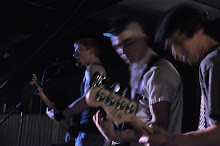The Godfather is a movie that is set apart from all other mafia movies because the plot intertwines so many different characters and stories so that it creates one coherent film. The length of the film may be discouraging to some but I believe that it is just as long as it needs to be in order to incorporate all of the necessary components that make this movie a classic. The movie also depicts crime in America and how easy it was for crime to thrive in the early 20th century. Another fundamental aspect of the movie was Marlon Brando's character and his motto to never mix business with personal life. This is a funny trait considering how deep in crime he is and how much of a family man he appears to be at the same time.
As far as how the film was shot, the lighting and framing were key elements that also helped make this movie outstanding. Shadows were often used to help add to the expression of facial characteristics and emotions. The framing used also switches back and forth from close scenes to pulled back scenes. The close-up scenes give the viewer a more personal feel for the characters while the far back landscape shots give the viewer an idea of location and time period. So much is accomplished with this movie that it is no wonder it has become so famous and renowned.
One of my favorite scenes in this movie is when Michael Corleone meets with Sollozzo and Chief of police McCluskey. Michael is picked up by the two men and is driven to a restaurant in the Bronx. The car ride to the restaurant is filled with shadows and close-ups of the character's faces as they are crammed into the car. McCluskey frisks Michael and finds nothing. The scene inside the restaurant is quiet and calm, almost peacful. There are few people eating and the three sit at a table that stands out in the center of the room. While the three converse, Michael keeps his cool and maintains his composure, not giving the other two any inkling that he is about to kill them. McCluskey seems distant at the meeting and seems to only care about his meal. Sollozzo, however, concentrates on Michael, but not well enough. When Michael asks to leave for the rest room, Sallozzo checks him for a weapon again but finds nothing. Once Michael enters the rest room, a sense of suspense is built. The viewer is shown a tiny, cramped bathroom stall in a dimmly lit bathroom. Michael heads to the toilet to find the gun but takes a while to retrieve it which makes the audience wonder if the gun was correctly planted. After Michael has the weapon, the suspense remains because the deed must still be accomplished without repercusions. When Michael exits the rest room and returns to the table, Sollozzo assumes everything is better, even though Michael is now visibly on edge and ready to snap. Al Pacino does a great job portraying a son who is about to get revenge on someone who has attempted to kill his father. Michael quickly stands up and pulls the gun. The camera then does a close-up of Sollozzo as he is shot in the head and of McClusky as he is shot i the throat and then the head. The camera shot then goes back to the entire restaurant and shows Michael pausing and taking in what he just did as well as the shocked patrons. When Michael finally moves, he grabs his coat, drops the gun, and then disappears into the shadows. He is then picked up by a car and driven away quickly.
This scene is just one of many of the movies turning points and shows how different angles and lighting can make a scene seem more realistic. As I have stated several times before, this is now one of my all time favorite movies. The presented and represented aspects go hand in hand and develop the movie into a story that one cannot help but feel connected to and be pulled into.
Friday, October 2, 2009
Subscribe to:
Post Comments (Atom)

No comments:
Post a Comment